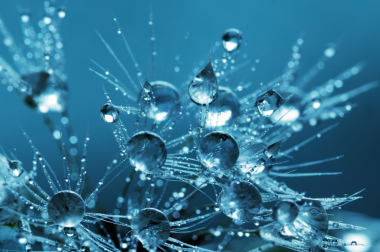Efficient irrigation system for sustainable agriculture
Important tips to keep in mind
The scarcity of water represents one of the biggest challenges for agriculture. To achieve a rich and high-quality harvest, an efficient irrigation system is essential. This applies to large agricultural operations as well as to hobby gardeners, smaller nurseries and producers of organic vegetables and fruit.
The current figures on global water supply illustrate the extent of the problem. Although 70% of the earth is covered with water, only a small proportion of it is freshwater. Only 2.5% of the water on earth is fresh water, of which 79% is not directly available because it is bound in ice caps and glaciers, for example. 20% of freshwater is in groundwater and only 1% is surface water.
The effects of water shortages are serious and have political, social and health consequences. Currently, 1.3 billion people lack access to clean water, while 2.5 billion people (40% of the world’s population) live without adequate sanitation. Five million people die every year from diseases caused by contaminated drinking water. According to forecasts, up to 3.4 billion people will live in water-stressed countries by 2025. In addition, 280 transboundary river basins worldwide are the cause of conflict.
Global water demand will increase by 17% by 2025, and in developing countries it will even rise by 40%. It is assumed that the lower threshold of water demand is 1,000 m3 per inhabitant per year. This amount is needed for the production of food, industrial goods and personal water needs. One way to compensate for water deficits is through virtual water trade, i.e. the import of food and industrial products. Water consumption per person per day is estimated at 4 liters of drinking water and 2,000 to 5,000 liters for food production. For example, 1,000 liters of water are required to produce 1 kg of grain, while 13,000 liters of water are required to produce 1 kg of beef. Producing food in drylands is an increasing challenge. The Yellow River in China has been deprived of water for 226 days a year since 1997, leading to a decline in grain production in China since 1998. The Colorado River in North America is only a trickle at the mouth. The amount of water is also limited by the pollution of the water. Over 2 million tons of waste are dumped into rivers, lakes and oceans every day, causing 1 liter of polluted water to contaminate 8 liters of clean water. The amount of polluted water is estimated at 12,000 km3 per year, which is more than the total volume of runoff from the ten largest river basins in the world.
Agriculture uses 70% of the world’s water to irrigate around 260 million hectares of agricultural land, which accounts for 17% of the total agricultural land. In comparison, industry only uses 21% of water. However, about 60% of the water used in agriculture and horticulture is lost unused. Errors in the use of water have led to the salinization of 150 million hectares of arable land.
It is clear that measures must be taken to use and save water resources sustainably. The next blog will cover more detailed options for efficient irrigation in agriculture.
